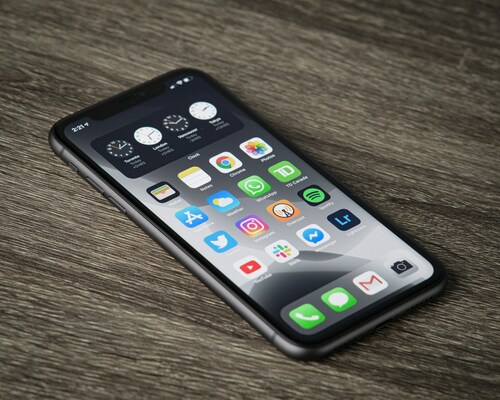
The successful operation of mobile applications requires developers to ensure their software functions without glitches across numerous device types while utilizing different screen sizes alongside various operating systems. The open-source automation tool Appium enables easy platform testing between Android and iOS; however, most teams encounter difficulties while replicating genuine real-world conditions because the default emulators or simulators fail to mimic end-user devices precisely.
Appium testers can improve their real-world use case simulation by creating custom devices within Appium to replicate their target deployment platform. Appium device customization enables you to replicate the hardware capabilities of low-memory devices along with high-end apparatus configurations with notches and specialized dimensions, thereby enhancing the effectiveness of your test coverage. Incorporating a mobile friendly test into your workflow can further ensure that your applications deliver consistent user experiences across varying mobile environments.
The following blog delivers an in-depth examination of the custom device addition process in Appium and its advantages, followed by a practical implementation guide. The next section demonstrates how to avoid workflow issues and offers essential tips for optimizing your Appium operations.
Why Simulate Real-World Devices?
Implementing custom devices in your Appium environment requires more than technical skills because it is an essential business choice. Here’s why:
- User Diversity: Your users are spread across hundreds of device models, OS versions, and hardware configurations. Testing on just the default emulator/simulator doesn’t cut it.
- Bug Reproduction: Some bugs only occur on specific devices due to GPU rendering, screen sizes, or memory allocation differences. Custom devices help replicate and squash these bugs efficiently.
- Performance Metrics: Mobile applications demonstrate various operational behaviors between low-end devices and other devices. Extending performance tests by measuring application loads, memory usage, and user interface reactions across multiple systems enables higher performance quality outcomes.
- Network Conditions & Hardware Variability: Mobile devices operating in real-life locations experience different network signal intensities coupled with variable speeds and connectivity options, including 3G, LTE, 5G, and Wi-Fi. Custom devices help developers test their apps across different network environments to guarantee standard application response in fast urban and poor rural networks.
- Security & Permissions Testing: Different OEMs often customize Android in unique ways, impacting how apps handle permissions, security prompts, or background processing. Testing on real or customized devices can help uncover edge cases where permissions behave unexpectedly or where platform-specific security constraints affect functionality.
The Appium Architecture at a Glance
Before starting with customization procedures, a brief examination of Appium’s architecture is necessary. Knowing how Appium performs at its core enables more effective device customization and configuration.
At its core, Appium is a client-server architecture:
- The Appium Server receives commands from the client (your test script). It interprets automation commands from the client and translates them into actions on the device, handling multiple requests simultaneously for efficiency.
- The Client Libraries (e.g., Java, Python, JS) send automation commands. These libraries offer APIs to interact with the app, allowing you to perform actions like clicking and typing while managing communication with the Appium Server.
- Appium functions as a client-server system that serves as its foundational design. The client (test script or framework) sends HTTP requests to the Appium Server, performing native device interactions and enabling cross-platform automation on Android and iOS.
- For emulators/simulators, it launches a virtual device image and connects via ADB or WebDriverAgent. Appium uses ADB for Android and WebDriverAgent for iOS to communicate with the emulator or simulator, enabling actions like app installation and gesture simulation.
The magic happens in the desired capabilities you pass when initializing a test session—where you define the device, OS, app, automation engine, and more.
Step-by-Step Guide: Adding a Custom Device in Appium
Let’s get hands-on. We’ll first cover Android and then iOS. The goal is to configure and launch a custom emulator or simulator that mimics a real-world device and connect it to Appium for automated testing.
Part 1: Custom Android Device Setup
Step 1: First, install the SDK tools and Android Studio.
Make sure Android Studio is installed, as well as:
- Android SDK
- AVD Manager
- Platform Tools (especially adb)
Step 2: Launch AVD Manager and Create a Custom Emulator
- Go to Tools → AVD Manager in Android Studio.
- Click “Create Virtual Device.”
- Select a base device (e.g., Pixel 4), then click “Next.”
- Choose a system image. For real-world simulation, choose the Android version your user base commonly uses.
- Please select “Show Advanced Settings” on the last screen.
Now, here’s where you make it custom:
- Device RAM: Set it to match your target device (e.g., 2GB for low-end phones).
- Resolution and DPI: Set screen dimensions (e.g., 720×1520, 320 dpi).
- Hardware Profile: Add custom sensors, input types, and orientation settings.
Give your AVD a custom name, e.g., Samsung_GalaxyA20_Custom, and finish the setup.
Step 3: Start the Emulator
From the AVD Manager or command line:
emulator -avd Samsung_GalaxyA20_Custom
Verify it’s running:
adb devices
Step 4: Connect Appium to the Emulator
Now, configure your test script with the proper desired capabilities:
{
“platformName”: “Android”,
“platformVersion”: “10”,
“deviceName”: “Samsung_GalaxyA20_Custom”,
“app”: “/path/to/your-app.apk”,
“automationName”: “UiAutomator2”,
“avd”: “Samsung_GalaxyA20_Custom”,
“avdLaunchTimeout”: 120000
}
Step 5: Run the Test
With the emulator running and the Appium server starting, execute your normal test. You’re now simulating a specific Android device!
Part 2: Custom iOS Device Setup
iOS simulators are more locked down than Android, but you can still create and configure custom profiles using Xcode’s CLI tools.
Step 1: Install the Command Line Tools and Xcode first.
Make sure Xcode is installed and the xcrun and simctl tools are available:
xcode-select –install
Step 2: Create a Custom Simulator
List available device types and runtimes:
xcrun simctl list devicetypes
xcrun simctl list runtimes
Create a custom simulator:
xcrun simctl create “iPhone 11 Custom” “iPhone 11” “com.apple.CoreSimulator.SimRuntime.iOS-16-0”
Start the simulator:
open -a Simulator
Boot the device:
xcrun simctl boot “iPhone 11 Custom”
Step 3: Configure Appium Desired Capabilities
Use the following configuration:
{
“platformName”: “iOS”,
“platformVersion”: “16.0”,
“deviceName”: “iPhone 11 Custom”,
“app”: “/path/to/your-app.app”,
“automationName”: “XCUITest”,
“noReset”: true,
“simulatorStartupTimeout”: 120000
}
Now, launch Appium and run your test scripts.
Best Practices for Custom Devices
To get the most out of your custom setups, keep these tips in mind:
- Base Your Custom Devices on Analytics
Real user analytics tools should be used to track the most common devices alongside their screen dimensions and operating system versions. These analytical tools include Firebase, Mixpanel, and Crashlytics, which offer user analysis capabilities.
- Validate with Real Devices Periodically
Even with highly customized emulators, there’s no substitute for testing on actual hardware. Make it a practice to validate critical test flows on physical devices, especially before major releases. It helps catch subtle bugs related to touch responsiveness, battery performance, or hardware-specific quirks that emulators may miss entirely.
- Use Device Farms for Scalability
Tools like LambdaTest allow you to run your Appium scripts on a scalable cloud grid of over 3000 real Android and iOS devices.
Teams that require replicating multiple hardware formats, diverse screen dimensions, and various operating system versions should select this approach because it eliminates expensive hardware maintenance needs. When you integrate LambdaTest with your CI/CD framework, you obtain parallel execution capabilities that help detect device-based flaws before release time while expanding testing capacity alongside your app development. This is especially effective when combining Appium with selenium mobile testing strategies to cover both native and web app behaviors across devices.
LambdaTest enables massive automation through its smart test orchestration system, detailed logs and video features for debugging purposes, and built-in tool connections that integrate with Jenkins GitHub Actions and CircleCI. The solution is an excellent platform for teams needing to optimize their mobile automation system and deliver quick and thorough tests.
- Simulate Network Conditions
Pair your custom devices with network throttling to simulate real-world latency or bandwidth issues using tools like Charles Proxy or Android’s Network Profiler.
- Keep Device Profiles Version-Controlled
Treat your custom device definitions like code—store them in version control (e.g., Git) alongside your test scripts. This ensures consistency across teams and environments, prevents configuration drift, and allows easy rollback or comparison when troubleshooting device-specific test issues.
- Automate the Device Launch
In CI pipelines, use scripts to launch emulators/simulators automatically before test execution.
emulator -avd Samsung_GalaxyA20_Custom -no-snapshot-load -no-audio -no-window &
- Name Devices Clearly and Consistently
Use a standardized naming convention for your custom devices (e.g., Pixel_5_Android12_HDPI, GalaxyA20_API29_MidTier). Clear naming makes it easier for teams to select the right configuration during test development and review logs efficiently. Consistency in names also helps automate test selection based on device tiers or OS versions.
- Monitor Emulator Performance
Keep an eye on how much system resources your emulators consume, especially when running multiple in parallel. High CPU or memory usage can cause flaky test results and slow your pipeline. Use lightweight device profiles where possible, and consider offloading heavier test runs to cloud device farms during peak loads.
- Regularly Update Device Profiles
Mobile operating systems and devices evolve quickly. Review and update your custom device configurations every few months to reflect current market trends, OS releases, and deprecations. This ensures your tests stay relevant and continue to effectively mimic real user environments.
- Tag Tests by Device Type
Use tagging or grouping in your test framework to categorize tests by device type—such as “low-end,” “tablet,” “notched display,” or “legacy Android.” This makes running targeted test suites easier, optimizing coverage, and prioritizing high-risk areas when time or resources are limited.
Common Pitfalls to Avoid
- Forgetting the AVD Name
Make sure the avd capability exactly matches your AVD name. It’s case-sensitive. Even a small typo or extra space can cause Appium to fail silently. Double-check your AVD Manager for the correct name.
- Version Mismatches
Ensure the OS version in your emulator/simulator matches the desired capabilities of the platform version. If they don’t align, tests may not launch or behave inconsistently. Consider using tools like adb shell getprop ro.build.version.release to verify.
- Emulator Not Booting in CI
Add sufficient boot time in CI environments using avdLaunchTimeout. Emulators often take longer to start under load—set the timeout to 120000ms or higher to be safe. You might also want to include avdReadyTimeout.
- Skipping the Custom Hardware Profile
Many issues stem from not customizing RAM, screen size, or sensors—just creating a new AVD isn’t enough. Use the AVD Manager to fine-tune the hardware profile, especially for tests that rely on camera, GPS, or specific screen resolutions.
In Conclusion
Using Appium’s custom setup functions provides organizations with technical upgrades and the opportunity to create applications that perform better for their users. When you test with original user devices, your testing process advances beyond basic methods. This method detects problems early while delivering precise performance analysis and preventing outlier occurrences.
Custom virtual environments allow you to test a wide range of mobile devices without spending money on costly hardware, enabling enhanced test scope for every configuration from entry-level to high-end models. By combining cloud-based device farms with CI/CD integration, your organization achieves both scalability and efficiency while getting highly realistic testing benefits.
Testing applications successfully leads to the creation of extraordinary digital products. Developing great tests starts with comprehending your users and the specific devices they use. Appium offers control and customization power so developers can achieve better app development through the use of tools.





